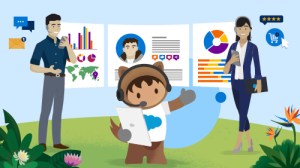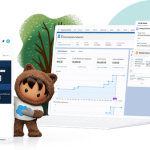We are excited to introduce the updated How to Sell Guide for ASEAN — now with advice from local sales specialists!
We’ll walk you through the sales process, from prospecting all the way to the all-important close. With advice from Trailblazers and Salesforce experts, this will be the last sales guide you’ll ever need.
The guide consists of five comprehensive chapters. To get an idea of the kinds of insights you’ll get, read on for a brief introduction, including samples of the kinds of advice you’ll find:
The sales process
There’s more to a sales process than simply ticking off items on a to-do list. You need to make sure that you create a connection with your prospects and customers. From the very beginning, when you are prospecting for customers, you should be asking yourself how you can solve your prospects’ problems.
As Annette Male, CEO of Wunderman Thompson, says, “focus not on what you want to sell, but on what the customer wants to buy. For this, you have to understand how the client makes money and runs their business. You have to live and breathe the client’s business, not just yours.”
Our guide to the sales process will answer these questions:
- What is the sales process?
- What are the main sales process steps?
- What are common sales process mistakes?
- What’s the difference between a sales process and a sales methodology?
Want to know more? Read Chapter 1: How to Build A Sales Process That Lands Deals Every Time.
Sales prospecting
Like seeds that grow into fruit-filled trees, your prospects might turn into lucrative deals. Not every seed will bloom, though, so you need to make sure you plant a lot of them.
Sales teams use prospecting to grow the size of their potential customer bases. By reaching out to leads, and nurturing them into opportunities, you can ensure that your sales pipeline is strong enough to carry you through to hitting your targets. If you lay strong foundations with your prospecting process, you can give yourself the best chance of converting leads into loyal customers.
But let’s not get ahead of ourselves. First, you have to know where to start. How do you find prospects? According to Dr. Ruth Protpakorn, Regional Sales Director, Customer Experience at Salesforce, the answer lies online: “There are lots of social networks out there, but think of LinkedIn as your first priority for finding new prospects,” she says.
Our guide to prospecting asks these questions:
- What are the stages of the sales prospecting process?
- How do I find new sales prospects?
- How has the sales prospect changed?
- How can I approach this new sales prospect?
- How do I qualify a sales prospect?
- How can I move sales prospects to the next stage in the sales cycle?
- How can I keep the conversation moving?
To get the answers, read Chapter 2: How to Do Sales Prospecting the Right Way.
The sales pipeline
Selling isn’t just about closing — there’s a lot of work to do before you get there. You’ll need to nurture your prospects through several stages before it’s time to sign on the dotted line.
Managing a sales pipeline can be difficult. A study from Harvard Business Review found that 61% of executives think their sales managers are not properly trained in pipeline management. Our guide is here to help you get started.
The pipeline can extend beyond the sale, too. “With the increased competition and greater product and service complexity of today’s marketplace, there is a need to adopt a relationship strategy that emphasises the lifetime customer,” says Tom Abbott, Sales Optimisation Expert and Keynote Speaker, Soco/Sales Training. “Instead of viewing prospects as transactional customers that you sell to once, you view them as partners in a long-term selling relationship.”
This chapter covers:
- What is a sales pipeline?
- What are the stages of a sales pipeline?
- How do you build a healthy sales pipeline?
- How do you evaluate a sales pipeline?
- How do you work with reps to improve the sales pipeline?
To get a deeper understanding of the sales pipeline, read Chapter 3: How to Get Your Sales Pipeline to Flow And Grow.
The sales call
You’ve done your research, you’ve qualified your leads. Are you ready to make that vital sales call? This is one of the most important stages of the sales process. Getting it right will set you up for success when it comes to closing.
Ironically, the sales call can sometimes be more about listening than talking. “Do your best to understand what the customer wants and let them make their own decisions. Don’t do it for them,” says Vu Anh Nguyen, General Manager at BAYA in Vietnam. “If you listen carefully and focus on the small details you will soon see why they make certain choices and how to influence their sales journey.”
To get the best out of that sales call, you’ll need to know the following:
- What is a sales call?
- How do you prepare for a sales call?
- Thirteen tips for making a successful sales call.
It’s nearly time to make that call, but only after reading Chapter 4: How to Get the Most Out of a Sales Call.
Closing techniques
The thrill you get from closing a sale can be hard to describe, but it’s what we’re all working towards. It’s a great moment when you know that you’ve helped your customer, and built a relationship that will be mutually beneficial for years to come.
If you’ve done the proper preparation, closing should be simple: “Closing the deal only comes after many successful steps leading up to it — it should be the easiest part of the process,” says Tahsin Alam, Vice President & GM Indonesia & Philippines at Salesforce. “The groundwork has already been done — closing just adds the finishing touches.”
But watch out. It’s easy to mess up a close, and spoil all of the hard work that came before.
This final chapter of our guide will tell you:
- What is sales closing and why is it important?
- What are the most common sales closing techniques?
- How do you improve at sales closing?
- What are sales closing pitfalls you should avoid?
Read all about the power of a strong close in Chapter 5: How to Close Sales Like an Absolute Pro.
This was just a taste of the kinds of tips and advice you can find in our comprehensive How to Sell Guide. With advice from our Trailblazers, and experts across Salesforce, you’ll never need another sales guide.
Start learning how to sell successfully today.

























